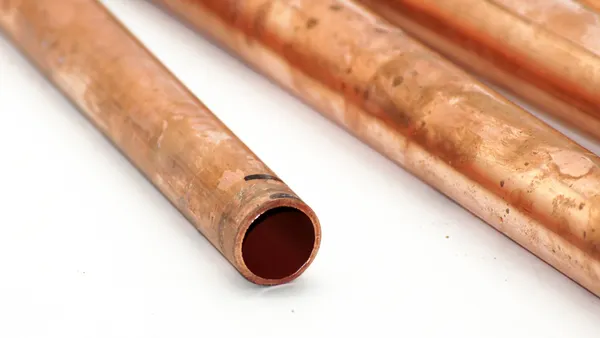Dive Brief:
- Philadelphia Mayor Jim Kenney signed two pieces of environmental legislation into law and released a report updating the Philadelphia Energy Benchmarking Program. The measures support the city's goal to cut carbon emissions 25% by 2025 and align with the Paris Climate Agreement.
- The first piece of legislation creates a Building Energy Performance Program requiring non-residential buildings 50,000 square feet or larger — about 2,000 buildings — to undergo a high-energy performance inspection, submit a certification to the Office of Sustainability and conduct recommended "tune ups," or retrocommissioning. The second piece of legislation tightens the standards for commercial fuel oil grades and sulfur content.
- The benchmarking report shows that Philadelphia's buildings experienced a 12% drop in greenhouse gas emissions and 5% decrease in energy use since 2013. "The energy benchmarking report... was sort of a foundational policy for us to understand how energy is being used in Philadelphia's largest buildings and where there are opportunities for change," Rich Freeh, senior program manager with the Philadelphia Office of Sustainability, told Smart Cities Dive. "It's certainly not the be all and end all — there's much more we need to do... But it's a huge step forward."
Dive Insight:
Besides its environmental benefits, the new building tune-up legislation is expected to be a job creator, leading to a potential 600 job opportunities over five years. The opportunities will be for tune-up specialists, or inspectors, and workers to update building systems deemed in need of repairs.
Building owners who do not comply with submitting an inspection certification to the city could face a fine of $2,000, plus an extra $500 per day after 30 days. "But we're not interested in fining, that not our goal," Freeh said. "Our goal is energy benchmarking and reporting and doing tune-ups. [Fines are] really a last resort."
Philadelphia city staff and leaders decided to target buildings because similar to other cities, buildings and transportation are the largest greenhouse gas emitters. Transportation overtakes buildings as the largest polluter in most cities, but that's actually reversed in Philadelphia, Freeh said. "Buildings are roughly 75% of the total carbon footprint citywide," he said, explaining transportation emissions are lower because Philadelphia has a robust transit system and is walkable.
Cities across the country have made a significant push in the past couple years to lessen building pollution and energy use, especially large buildings. This summer, Chicago launched its Energy Rating System to rate and make public large buildings' energy efficiency in compliance with its energy benchmarking ordinance. Earlier this year, Chicago committed to becoming the largest U.S. city to transition to 100% renewable energy by 2035.
Around the same time, San Francisco committed to transitioning large commercial buildings to 100% renewable energy by 2030. New York passed legislation requiring buildings over 25,000 square feet to cut emissions 40% by 2030 and more than 80% by 2050. This fall, Pittsburgh Mayor Bill Peduto introduced legislation requiring government buildings to be net zero energy efficient, coming on the heels of that city's first energy benchmarking report.
Philadelphia's new laws are in line with other U.S. cities and with goals stated in the Paris Agreement. The city estimates the building retrocommissioning will cut pollution by nearly 200,000 metric tons, or the equivalent of removing 40,000 vehicles from the roads.
"I've been with the city almost seven years, and from my perspective, this is the most impactful legislation that's been moved for cutting the citywide carbon footprint," Freeh said. "From a climate action perspective, it's super exciting that we've been able to work with the city council, issue stakeholders, building owners and operators, advocates and the service community to push forward."










